Barak UpdatesAnalyticsBreaking NewsFeature Story
A dreamer from Silchar in an archipelago: Swapnesh Choudhury, a lesser-known art legend

July 4: When dream dissolves in the distant horizon, hues of it’s hangover keeps on lurking, searching for an opportune moment to come out and illumine human civilisation with a touch of ecstasy. Such a star keeps on emitting rays for the posterity to ponder upon the ways he went along thereby taking the creativity in its stride and leaving behind a saga of inspiration for the posterity to follow with pride. Here is a narrative on a man who in his youth walked across Silchar only to blossom in a national context. This write-up for way2barak by Dr. Himabrata Das, is a translation of Dr Ganesh Nandi’s 2017 piece on Swapnesh Choudhury’s pioneering contribution to art in Andaman.
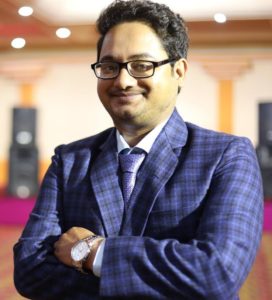
Andaman intrigues with its captivating vistas and pristine scenic beauty. It houses the Cellular Jail, the erstwhile colonial prison built by the British to punish political prisoners,which now serves as a national memorial monument. Every brick in the panopticon is a silent witness to the brutality that our freedom fighters withstood. It is not barbarity, but a liberation from the shackles of darkness that draws travellers who come seeking its heavenly wonder and timeless charm. A visit to the Cellular Jail is like a stimulating pilgrimage to the hordes of visitors coming to the archipelago. The creative mind behind the awe-inspiring display of compelling art, rich taste and prolific history is a proud son of Silchar. The man who single-handedly transformed the face of art in Andaman with his ardent perseverance is none other than Mr. Swapnesh Choudhury. Mostly forgotten by Barak Valley’s current generation, Mr Choudhury’s creativity, determination and his distinctive style has made him a respected name in contemporary Indian art.
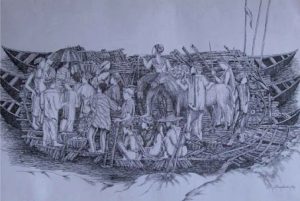 But the artist who has charted the pinnacle of success did not have the smoothest of beginnings. And unsurprisingly so. Even as today’s youngster from Silchar finds it challenging to muster the courage to take up art as a full-time vocation, a career in arts would definitely have been a lot more far-fetched for someone like Mr Choudhury growing up in the 50s and the 60s owing to the dearth of inspirational figures in the field of art, a rudimentary art scene and also a lack of formal art academies. Despite the many shortcomings, it was the indomitable art fervour of the generation that led many aspiring youngsters to explore distant shores in pursuit of their passion for art.
But the artist who has charted the pinnacle of success did not have the smoothest of beginnings. And unsurprisingly so. Even as today’s youngster from Silchar finds it challenging to muster the courage to take up art as a full-time vocation, a career in arts would definitely have been a lot more far-fetched for someone like Mr Choudhury growing up in the 50s and the 60s owing to the dearth of inspirational figures in the field of art, a rudimentary art scene and also a lack of formal art academies. Despite the many shortcomings, it was the indomitable art fervour of the generation that led many aspiring youngsters to explore distant shores in pursuit of their passion for art.
 One such glittering name in the list of the many that were involved in the exodus was that of Mr Swapnesh Choudhury. Born to Subodh Chandra Choudhury and Shantilata in the year 1944, the young Swapnesh came to Silchar at an early age from his birthplace MaulviBazar in British India. He grew up in the North Silchar neighbourhood of Aryapatty where his father who was employed with the Indian Postal Service had settled. He completed his matriculation from the prestigious Government Boys’ HS School, Silchar before moving to Kolkata to pursue art.
One such glittering name in the list of the many that were involved in the exodus was that of Mr Swapnesh Choudhury. Born to Subodh Chandra Choudhury and Shantilata in the year 1944, the young Swapnesh came to Silchar at an early age from his birthplace MaulviBazar in British India. He grew up in the North Silchar neighbourhood of Aryapatty where his father who was employed with the Indian Postal Service had settled. He completed his matriculation from the prestigious Government Boys’ HS School, Silchar before moving to Kolkata to pursue art.
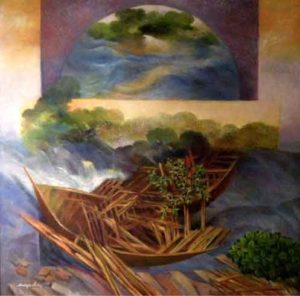 The young Swapnesh impressed one and all with his drawings from a tender age and he came across as a natural. The theatre scene at that time in Silchar was especially vibrant. The biggest source of entertainment after Durga Puja was certainly theatre. Only the most gifted creative minds would be called upon for as stagehands and make-up artists. Three youngsters whose names would feature prominently included Sushen Ghosh, Suchibrata Deb and Swapnesh Choudhury. The biggest name when it came to setting up the stage was that was of Sadhan Dutta. He would be a role model for the likes of young Swapnesh. The sparkling name in contemporary Indian sculpture,Sushen Ghosh also came from Aryapatty. That is how the young Swapnesh ended up spending a lot of time with the veteran learning the craft of stage design, sculpture and other creative art forms.
The young Swapnesh impressed one and all with his drawings from a tender age and he came across as a natural. The theatre scene at that time in Silchar was especially vibrant. The biggest source of entertainment after Durga Puja was certainly theatre. Only the most gifted creative minds would be called upon for as stagehands and make-up artists. Three youngsters whose names would feature prominently included Sushen Ghosh, Suchibrata Deb and Swapnesh Choudhury. The biggest name when it came to setting up the stage was that was of Sadhan Dutta. He would be a role model for the likes of young Swapnesh. The sparkling name in contemporary Indian sculpture,Sushen Ghosh also came from Aryapatty. That is how the young Swapnesh ended up spending a lot of time with the veteran learning the craft of stage design, sculpture and other creative art forms.
 The greats of the time such as Birendralal Bhowmik, Dhiresh Paul and Parimal Duttaroy played a crucial role in generating a burning affinity for art in the young Swapnesh’s heart. The fire that had been ignited by the illustrations of famous artists in various Kolkata magazines and the textbooks of Birendralal Bhowmik propelled Mr Choudhury to the City of Joy in 1960 where he learned the basics of art from Kalyan Bose. After 2 years of training, he joined the Government College of Arts and Crafts. His father ably supported him asking him to continue his education without losing a year and that a year wasted would be tough to sustain.
The greats of the time such as Birendralal Bhowmik, Dhiresh Paul and Parimal Duttaroy played a crucial role in generating a burning affinity for art in the young Swapnesh’s heart. The fire that had been ignited by the illustrations of famous artists in various Kolkata magazines and the textbooks of Birendralal Bhowmik propelled Mr Choudhury to the City of Joy in 1960 where he learned the basics of art from Kalyan Bose. After 2 years of training, he joined the Government College of Arts and Crafts. His father ably supported him asking him to continue his education without losing a year and that a year wasted would be tough to sustain.
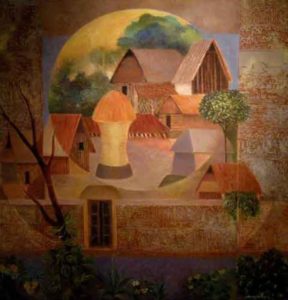 Getting into the Government Arts’ College was no mean achievement. Mr Choudhury was one of the hallowed 7 to make it to the merit list our of the 700 odd applicants. By the time he graduated with distinction in the year 1967, his teacher Satyen Ghosal had left an indelible imprint on his creative style. And then started the path-finding. The struggle for survival in the Kolkata of the times was grueling. He joined the Anandabazar Patrika as an illustrator at the patronage of another luminary from Silchar, Amitava Choudhury who was the Editor of the publication for a meager salary of 75 rupees a month. But that job didn’t last long in the backdrop of the Naxal movement.
Getting into the Government Arts’ College was no mean achievement. Mr Choudhury was one of the hallowed 7 to make it to the merit list our of the 700 odd applicants. By the time he graduated with distinction in the year 1967, his teacher Satyen Ghosal had left an indelible imprint on his creative style. And then started the path-finding. The struggle for survival in the Kolkata of the times was grueling. He joined the Anandabazar Patrika as an illustrator at the patronage of another luminary from Silchar, Amitava Choudhury who was the Editor of the publication for a meager salary of 75 rupees a month. But that job didn’t last long in the backdrop of the Naxal movement.
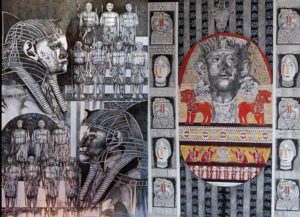 The unemployed Mr Choudhury kept on applying for different jobs. His break came in 1969 when he cracked the Telecommunications interview and got a posting in Ahmedabad. But destiny had scripted a different route for Mr Choudhury. His friend Gourishankar Mitra told him about a job interview for an opening in Andaman. The invitation to the islands came via a four-page telegram. Mr Choudhury’s life was about to change drastically as he joined as an Arts teacher under the Department of Education. The child that grew up on the banks of the mighty Barak embraced the Andaman scenery with bewilderment. The island came to life on his canvas.
The unemployed Mr Choudhury kept on applying for different jobs. His break came in 1969 when he cracked the Telecommunications interview and got a posting in Ahmedabad. But destiny had scripted a different route for Mr Choudhury. His friend Gourishankar Mitra told him about a job interview for an opening in Andaman. The invitation to the islands came via a four-page telegram. Mr Choudhury’s life was about to change drastically as he joined as an Arts teacher under the Department of Education. The child that grew up on the banks of the mighty Barak embraced the Andaman scenery with bewilderment. The island came to life on his canvas.
 With his remarkable proficiency and creative mastery, his influential works depicted the beaches on the island, obscure waterways, marine marvels and marvellously coloured birds and fishes. Other recurring themes of his works remain the primitive lifestyle of the indigenous people of the island and diverse flotilla that dotted the horizon. He presented the mysteries of the islands to mainstream India as a unique entity. Despite nature dominating his artworks, his immaculate fundamental art was highly appreciated by the country’s intelligentsia. Though rooted in reality, his paintings dwell in the realm of imagination and reflect vitality and rhythm. So distinctive is his artistic style.
With his remarkable proficiency and creative mastery, his influential works depicted the beaches on the island, obscure waterways, marine marvels and marvellously coloured birds and fishes. Other recurring themes of his works remain the primitive lifestyle of the indigenous people of the island and diverse flotilla that dotted the horizon. He presented the mysteries of the islands to mainstream India as a unique entity. Despite nature dominating his artworks, his immaculate fundamental art was highly appreciated by the country’s intelligentsia. Though rooted in reality, his paintings dwell in the realm of imagination and reflect vitality and rhythm. So distinctive is his artistic style.
 The true artist is not a wishful creature separate from society. That central idea that led him to undertake social reform in the island is evident all throughout his actions, thought, conduct and his vast body of work. He took it upon himself to raise sensitivity about art in the local community. Under his stewardship was set up the Andaman Artists’ Circle. Apart from organising annual exhibitions in Port Blair, the output organised displays at Kolkata and Bengaluru. He retired from the Teachers’ Training Institute after a short stint at the Andaman B.Ed College.
The true artist is not a wishful creature separate from society. That central idea that led him to undertake social reform in the island is evident all throughout his actions, thought, conduct and his vast body of work. He took it upon himself to raise sensitivity about art in the local community. Under his stewardship was set up the Andaman Artists’ Circle. Apart from organising annual exhibitions in Port Blair, the output organised displays at Kolkata and Bengaluru. He retired from the Teachers’ Training Institute after a short stint at the Andaman B.Ed College.
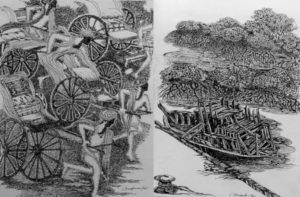 Meanwhile, scores of promising boys and girls from the island have gone on to graduate from the best art institutes of the country. Mr Swapnesh Choudhury remains their guiding light in their travels in the annals of art. As a representative of Andaman in the Lalit Kala Academy and Purbanchal Sanskritik Parishad, Mr Choudhury has successfully enabled the integration of the indigenous art and culture into the national mainstream. Today Andaman, with a vibrant creative environment, is a breeding ground for art enriched by a sensitive cohort of lovers of art and culture. The lion’s share of the credit for this remarkable transformation is due to the proud son of Silchar-Swapnesh Choudhury
Meanwhile, scores of promising boys and girls from the island have gone on to graduate from the best art institutes of the country. Mr Swapnesh Choudhury remains their guiding light in their travels in the annals of art. As a representative of Andaman in the Lalit Kala Academy and Purbanchal Sanskritik Parishad, Mr Choudhury has successfully enabled the integration of the indigenous art and culture into the national mainstream. Today Andaman, with a vibrant creative environment, is a breeding ground for art enriched by a sensitive cohort of lovers of art and culture. The lion’s share of the credit for this remarkable transformation is due to the proud son of Silchar-Swapnesh Choudhury
**(A write-up for way2barak by Dr. Himabrata Das, it is a translation of Dr Ganesh Nandi’s 2017 piece on Swapnesh Choudhury’s pioneering contribution to art in Andaman)





